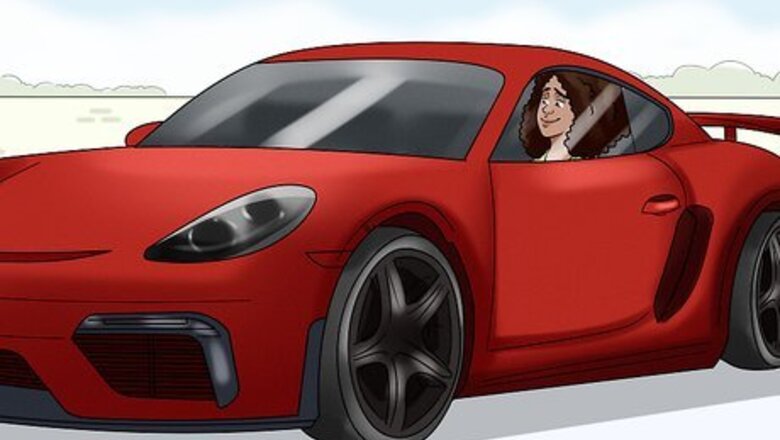
views
Take deep breaths of fresh air.

Open the car windows or turn on the air conditioning to get the air moving. If the air in the car feels stuffy or hot, you may start feeling nauseous. For quick relief, open the windows or turn on the air conditioning to fill the space with fresh, cool air. Direct the fans so they're pointed right at you. You can also bring along a small handheld fan that you can use if your car doesn't have air conditioning.
Stop the car and take frequent breaks.

Get out and stretch your legs if you're feeling queasy. If you often get car sickness, give yourself extra travel time so you can stop whenever you need to. Pull off to a safe place and walk around for a few minutes. This can help you settle your stomach and clear your head so you're ready to travel again. If you're going on a long car trip, plan on giving yourself a 5-minute break for every 30 minutes of travel, for instance. You can adjust this amount if you need more rest or if you don't want to stop as often. Your breaks don't have to be extensive! Even just stopping at a rest shelter to use the bathroom can be enough of a break.
Keep your eyes on the horizon.
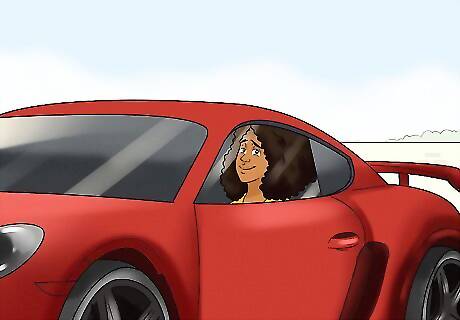
Avoid reading or watching something on a screen. Trying to focus on something near your eyes while you sense movement out of your window can make you feel worse! Instead, look forward out the window or shut your eyes. It might help to keep your gaze focused on a single point as you travel to help minimize the effects of car sickness. For instance, if you're driving toward a mountain or along a straight highway, look straight ahead at it.
Relax and take deep breaths.
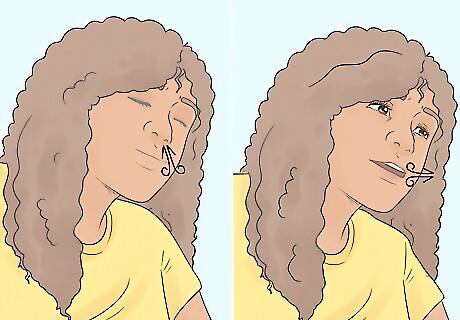
Practice controlled breathing to prevent nausea. Research shows that you can suppress motion sickness by regular, deep breathing. For example, breathe in slowly through your nose. Picture the breath going to the top of your head before you slowly breathe out through your mouth. Keep doing this until you feel better. This is really helpful to do with the window down so you're also getting fresh air.
Listen to soothing music.
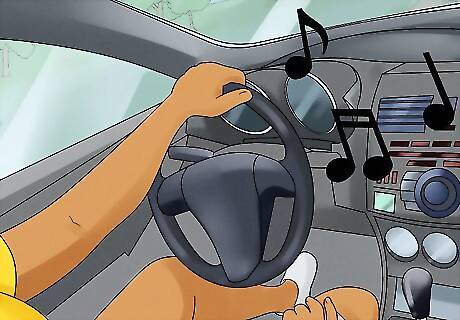
Turn on music that puts you in a good mood. The upbeat music can distract you and calm your mind so you're not as focused on the motion. Feel free to play whatever kind of music you like! You may want to pack your own headphones if other people in the car want to listen to something else.
Close your eyes or sit in the front seat.
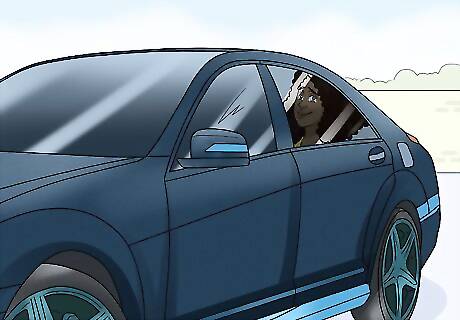
Sit in the passenger seat so you can keep an eye on the horizon. This helps your brain interpret the movement signals it's getting so you won't feel sick. If you can't sit in the front, don't worry! Sit in the back seat so you're facing forward and close your eyes or put on a pair of sunglasses. This can block some of the light so you don't notice the movement as much. Avoid looking out of the side window and instead, look directly ahead so images aren't blurring past you. Some people find that driving the car lessens their motion sickness. If you're comfortable and tired, try to fall asleep. This can help you get through the trip without feeling motion sick.
Pack ginger products to prevent nausea.
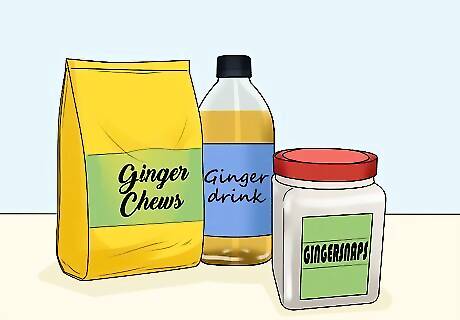
Ginger chews, gingersnaps, and ginger drinks can aid digestion. There have also been studies that show ginger safely treats nausea and vomiting. This makes ginger great for car trips! Read the ingredient list on products to ensure there's really ginger in them. Better yet, snack on ginger chews or food that has crystallized ginger in it. A lot of ginger ale doesn't actually contain ginger. Read labels to find one that includes it or sip a non-alcoholic ginger beer that contains real ginger.
Munch on bland snacks if it's a long car trip.
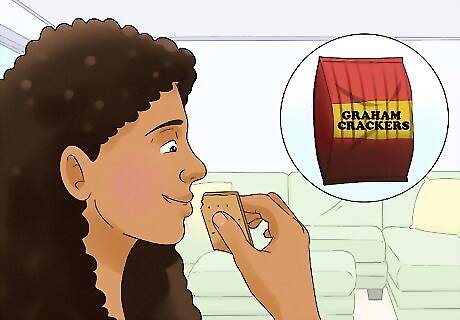
Snack on simple, dry snacks if you're feeling hungry. Traveling on an empty stomach can make you nauseated just like traveling on a full stomach. Pack bland easy-to-digest snacks like soda crackers, graham crackers, or gingersnaps and munch on them if you're feeling a little hungry. The dry food can also soak up excess stomach acid to relieve minor tummy troubles. Avoid greasy fatty foods like fries or potato chips. You should also skip drinks that have dairy or carbonation since these can irritate your sensitive stomach.
Stick to a light meal before you travel.

Avoid traveling on an empty stomach but don't eat a huge meal. Try to avoid greasy, fatty foods that often upset your stomach and don't drink caffeine or alcohol. You might eat a simple sandwich or crackers and some fruit, for instance. Studies have shown that foods high in histamines like cheese, tuna, and salami, can contribute to motion sickness so skip these foods. You should also avoid filling up on a lot of liquid. Not only will you need to stop for the restroom more frequently, but the excess liquid in your stomach can make you nauseated.
Take anti-motion medication 30 to 60 minutes before you travel.
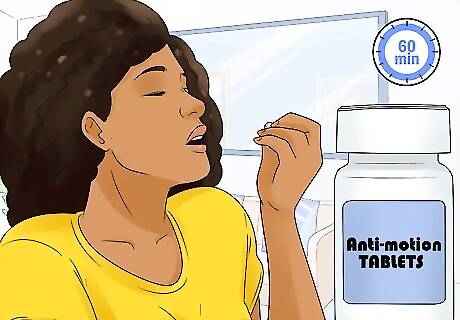
Pick up over-the-counter medication the prevents nausea. Look for one that contains cyclizine, dimenhydrinate, meclizine, or promethazine. These medications target the area in your brain that senses motion and triggers nausea. Read the manufacturer's dosing information and take the medication before you get in the car. Anti-motion medication is more effective if you also try other techniques like breathing fresh air and keeping your eyes on the horizon. If you're treating motion sickness in children, talk with their pediatrician since treatment is considered off-label. This means you'll probably be advised to give your child an antihistamine that makes them drowsy so they're less likely to feel motion sick.
Avoid smoking the night before you leave.

Take a break from smoking to deprive your body of nicotine. A small research study found that overnight nicotine deprivation made people more tolerant to motion so they didn't get motion sickness as badly. In fact, not smoking had the same effect as taking a half-dose of anti-motion sickness medication. If you're not a smoker but other people in the car are, ask them to not smoke while you're traveling together.



















Comments
0 comment